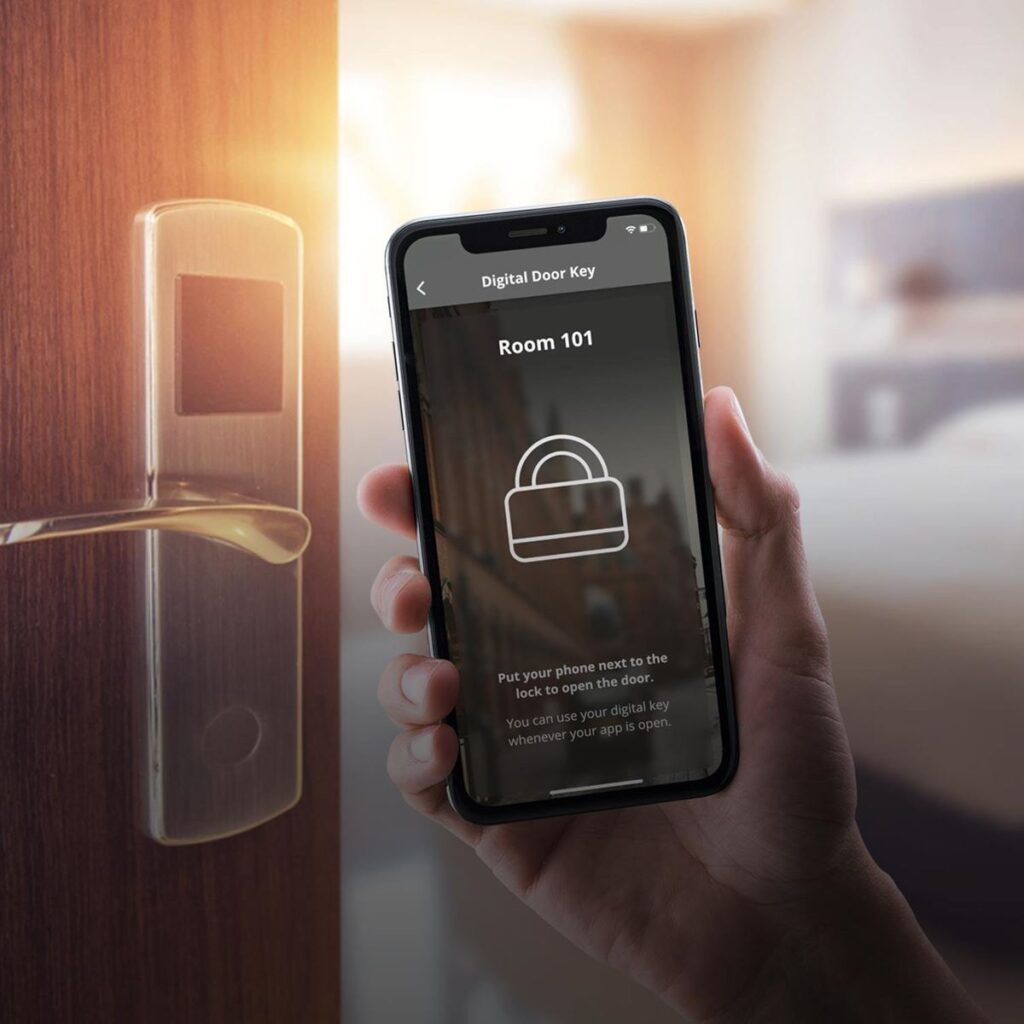In today’s digital age, technology is playing an increasingly important role in the hospitality industry. Hotels and restaurants are turning to new technology such as self-service kiosks, mobile room keys, and virtual reality tours to provide the best possible customer service and enhance the guest experience. One of the latest technology trends in the hospitality industry is the use of mobile room keys, which allow guests to use their smartphones to access their rooms, eliminating the need for physical keys. Table-side ordering system is another technology that is becoming increasingly popular in restaurants, as it allows guests to place their order and make payments directly from their table. These latest technology trends not only improve the customer service but also help hotels and restaurants to increase revenue, improve efficiency and build customer loyalty.
Technology is constantly evolving and the hospitality industry is no exception. In order to provide the best possible customer service, hotels and restaurants are turning to new technology to enhance their guest experience. Here are five of the latest technology trends in the hospitality industry:

Self-Service Check-In Kiosks: Self-service check-in kiosks are becoming increasingly popular in hotels. They allow guests to check-in and select their room quickly and easily, without having to wait in line at the front desk. This technology also allows guests to check-in at any time, even if the hotel’s front desk is closed.
Self-service check-in kiosks are not only convenient for guests but also for hotels, as they can help to reduce labor costs and improve efficiency. These kiosks can also be programmed to upsell guests on additional services, such as room upgrades or parking. Some hotels are also using facial recognition technology in conjunction with self-service kiosks to provide a more secure and personalized check-in experience.

Mobile Room Key: Many hotels now offer guests the ability to use their smartphones as room keys. This eliminates the need for physical keys, which can be easily lost or stolen. Guests simply download the hotel’s mobile app and use it to unlock their room.
Mobile room key technology also provides added security for hotels. Unlike traditional keys, mobile keys cannot be copied, and they can be easily deactivated if lost or stolen. Additionally, some hotels are also using this technology to allow guests to access other areas of the hotel, such as the fitness center or swimming pool, and charge them accordingly, this can help hotels to increase their revenue and provide a more convenient service to their guests.

Table-Side Ordering: Table-side ordering is a technology that allows guests to place their order and make payments directly from their table. This eliminates the need for guests to wait in line at the restaurant’s counter. It also allows guests to order and pay for their meals more quickly and efficiently.
Table-side ordering technology can not only improve the guest experience by reducing wait times, but it also provides valuable data to restaurants. For example, restaurants can use this data to track customer preferences and make informed decisions about menu offerings and pricing. Additionally, table-side ordering technology can also help to reduce errors in orders and increase the speed of service, which can improve customer satisfaction.

Virtual Reality Tours: Virtual reality tours are becoming increasingly popular in hotels. They allow guests to explore the hotel and its amenities before they arrive. This helps guests to make more informed decisions about their stay and increases their satisfaction with the hotel.
Virtual reality tours are really a fun and engaging way for guests to explore a hotel before they arrive, but they can also help to increase bookings. Virtual reality tours provide guests with a much more realistic and immersive experience than traditional photos or videos. This can help to build excitement and anticipation for a guest’s stay and increase their likelihood of booking a room.

Chatbots: Chatbots are computer programs that are designed to simulate human conversation. They are being used in hotels and restaurants to provide guests with information and assistance. For example, guests can use chatbots to make reservations, request room service, or ask for directions.
Chatbots are a cost-effective way for hotels and restaurants to provide 24/7 customer service. They can also be programmed to answer frequently asked questions, such as directions to the nearest attractions or hours of operation, which can free up staff to focus on more complex requests and personalize the service. Additionally, chatbots can also be integrated with other technologies, such as mobile room key and table-side ordering, to provide a seamless and convenient customer service experience.
Overall, the incorporation of these new technologies in the hotels and restaurants are helping to improve the customer service and enhance the guest experience. This can lead to increased guest satisfaction, loyalty, and ultimately boost the revenue for the businesses.
In conclusion, these latest technology trends are not only helping hotels and restaurants to provide better customer service but also helping them to increase revenue, improve efficiency and build customer loyalty. As technology continues to evolve, it will be interesting to see how these trends will further shape the hospitality industry in the future.

